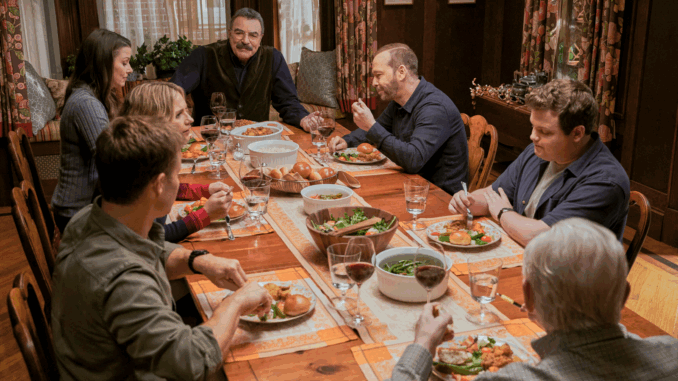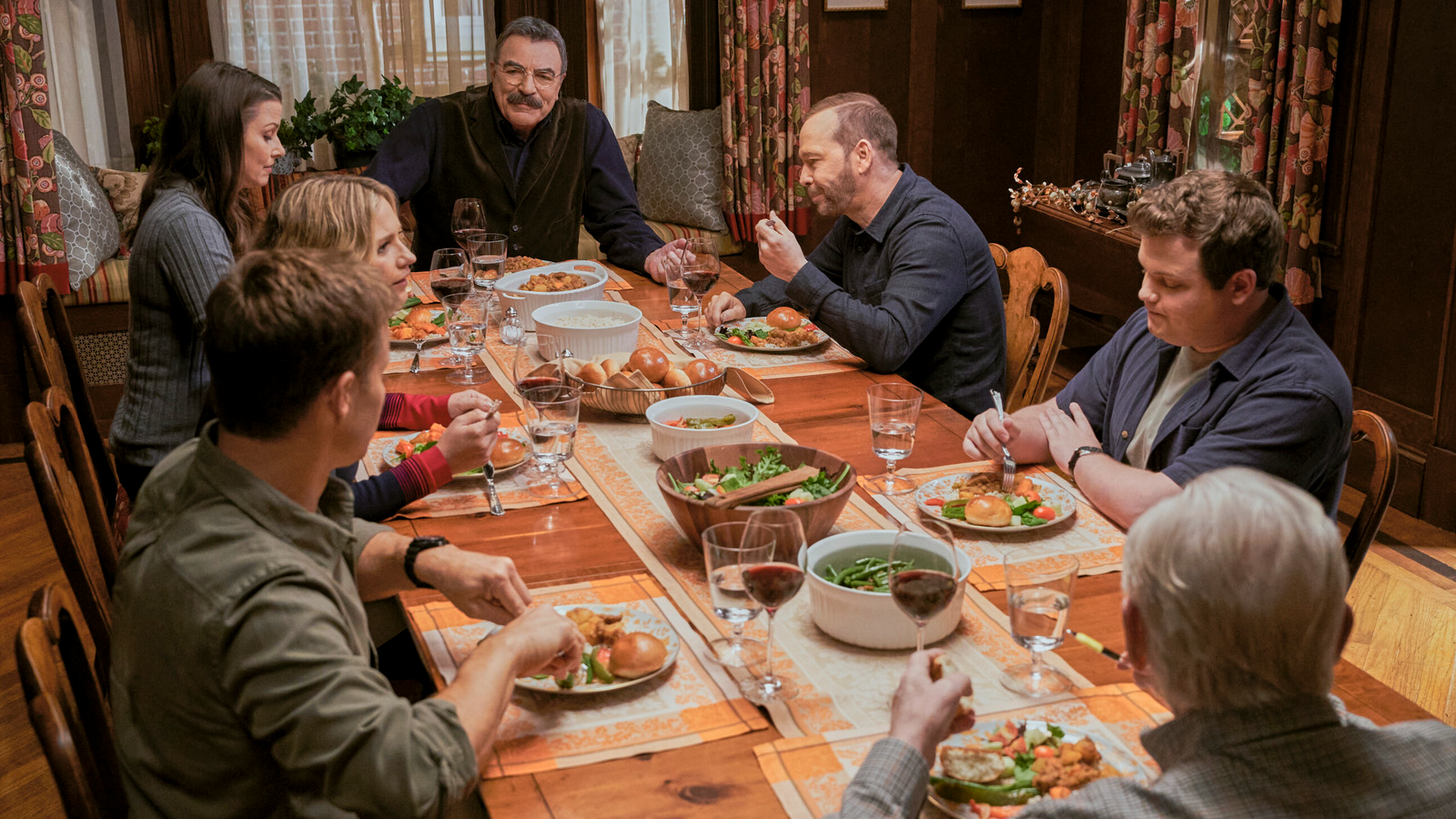
For more than a decade, Blue Bloods has given audiences something rare in modern television: a crime drama that blends justice, loyalty, and family in a way no other show has quite mastered. At the heart of this long-running series is the legendary Reagan family, whose weekly dinner scenes have become the soul of the show—and one of the most iconic traditions in TV history.
The Reagans are more than just fictional characters. To millions of fans, they feel like family—people you check in on every Friday night. But what makes the Reagan dinner table so irresistible? Why do these scenes spark thousands of comments, emotional reactions, and heated debates from fans across the world?
The power lies in the dynamic of the cast.
Tom Selleck, who plays Police Commissioner Frank Reagan, anchors the family with a quiet authority that feels both fatherly and formidable. His presence during the dinner scenes is magnetic—not because he speaks loudly, but because he listens with intention, guiding the family through moral dilemmas, personal struggles, and generational conflicts.
Donnie Wahlberg brings fire to the table as Danny Reagan. Known for his intensity, sarcasm, and occasional temper, Danny adds the spark that keeps conversations lively. Off-camera, Wahlberg is surprisingly soft-hearted and frequently emotional, and that duality makes Danny feel real: a tough cop with a wounded but loyal heart.
 Then there’s Will Estes, the level-headed Jamie Reagan. His calm contrasts perfectly with Danny’s passion, creating some of the show’s most relatable sibling moments. Estes himself is thoughtful, private, and deeply committed to his craft—traits that make Jamie’s character even more authentic.
Then there’s Will Estes, the level-headed Jamie Reagan. His calm contrasts perfectly with Danny’s passion, creating some of the show’s most relatable sibling moments. Estes himself is thoughtful, private, and deeply committed to his craft—traits that make Jamie’s character even more authentic.
Bridget Moynahan, portraying ADA Erin Reagan, brings wisdom and independence to the table. Her character balances the male-heavy cast, offering a sharp legal mind that often challenges the rest of the family. Moynahan’s off-screen personality closely mirrors Erin’s—strong, composed, and quietly powerful.
But what most fans don’t know is that the dinner scenes are filmed all day long. The cast sits together for hours, eating cold food, repeating lines, and discussing real-life issues between takes. Many actors have said that these days feel like actual family reunions. Wahlberg once joked that after so many hours of eating roast chicken on set, he couldn’t look at chicken for months.
It’s this authenticity—rooted in both script and cast chemistry—that makes the dinner scenes so emotionally compelling. They aren’t just filler moments. They’re the show’s heartbeat.
These scenes explore moral gray areas in policing, legal disputes, generational differences, personal loss, faith, trauma, and loyalty. Fans tune in not just for crime-solving but for the sense of unity, tradition, and connection that the Reagan family provides.
In a world that often feels divided and hectic, the Reagan dinner table represents something many people crave: a place to belong.
Each family member has flaws, conflicts, and disagreements, yet they show up every week for each other. For many viewers, Blue Bloods is the closest they’ll get to experiencing such a ritual—and that makes the show deeply personal.
It is no surprise that social media erupts every time a dinner scene gets emotional, heated, or heartfelt. Fans analyze facial expressions, make memes, debate who was “right” in a given argument, and even host their own “Reagan-style dinner nights” at home.
After more than 13 seasons, the Reagans continue to offer comfort, nostalgia, and a reminder that family—however imperfect—is worth fighting for.
